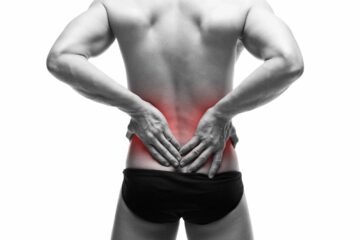Fatty liver disease (FLD), including non-alcoholic fatty liver disease (NAFLD), occurs when excess fat builds up in the liver, potentially leading to inflammation, fibrosis, or cirrhosis. While Western medicine focuses on weight loss and medications, a holistic approach—especially through Chinese Medicine (CM)—views FLD as an imbalance in the body’s energy (Qi), often involving liver Qi stagnation, spleen deficiency, damp-heat accumulation, or blood stasis. This perspective emphasizes treating the whole person: body, mind, and spirit, through diet, herbs, acupuncture, exercise, and lifestyle changes. CM’s multi-target therapies can reduce fat deposition, inflammation, and oxidative stress while improving lipid metabolism and gut-liver health. Always consult a qualified CM practitioner or healthcare provider before starting treatments, as individualized diagnosis is key.
Chinese medicine View of Fatty Liver Disease
In CM, FLD is not just a liver issue but a systemic imbalance. Common patterns include:
- Liver Qi Stagnation and Spleen Deficiency: Emotional stress blocks Qi flow, weakening digestion and leading to fat accumulation.
- Damp-Heat Accumulation: Excess dampness (from poor diet) and heat cause inflammation and steatosis.
- Blood Stasis: Impaired circulation exacerbates fibrosis.
Treatment principles: Soothe the liver, tonify the spleen, clear damp-heat, and promote blood circulation. CM formulas and herbs target multiple pathways, such as AMPK activation for lipid regulation and anti-inflammatory effects via NF-κB inhibition.
Dietary Suggestions
Diet is foundational in both holistic and CM approaches. Aim for a Mediterranean-style eating pattern to reduce liver fat by 20-30% with consistent adherence.
- Foods to Include: Green leafy vegetables (e.g., spinach, kale) to clear heat; whole grains like barley or oats to strengthen the spleen; bitter foods (e.g., dandelion greens, bitter gourd) for detoxification; lean proteins (fish, tofu); and fruits like hawthorn berries or citrus for Qi circulation. Drink green tea or coffee (2-3 cups daily) for antioxidant benefits and reduced fibrosis risk.
- Foods to Avoid: Sugary drinks, refined carbs, fried foods, and excess red meat, which generate damp-heat. Limit alcohol entirely for alcoholic FLD.
- CM Tip: Eat warm, cooked meals to support spleen Qi; incorporate porridges with herbs like poria cocos for dampness resolution. Aim for 10-20% calorie reduction for weight loss, targeting 5-10% body weight reduction to reverse steatosis.
Herbal Remedies
CM herbs offer potent, evidence-based support, often used in formulas for synergy. Key suggestions (doses vary; consult a practitioner):
- Bupleurum (Chai Hu): Soothes liver Qi stagnation, reduces inflammation; effective for early-stage FLD.
- Schisandra Berry (Wu Wei Zi): Protects liver cells, lowers oxidative stress, and improves insulin resistance.
- Salvia Miltiorrhiza (Danshen): Promotes blood circulation, reduces fat accumulation via PPAR pathways.
- Hawthorn (Shan Zha): Aids digestion, lowers lipids; rich in flavonoids for anti-inflammatory effects.
- Poria Cocos (Fu Ling): Drains dampness, strengthens spleen; helps regulate gut microbiota.
- Formulas: Try Chai Hu Shu Gan Powder for Qi stagnation or Er Chen Decoction for dampness. Clinical studies show formulas like Qushi Huayu Decoction improve liver enzymes and histology. Start with 3-6 months of use under supervision to monitor progress.
Acupuncture and Acupressure
Acupuncture balances Qi and meridians, reducing liver fat and inflammation. Sessions (1-2 weekly) target points like:
- Liver 3 (Taichong) and Spleen 6 (Sanyinjiao) for Qi flow and dampness clearance.
Studies show acupuncture combined with herbs lowers ALT/AST levels and improves steatosis more than herbs alone. At home, try acupressure on these points for 5-10 minutes daily. Moxibustion (herbal heat therapy) enhances effects for cold-damp patterns.
Exercise and Movement
Physical activity is crucial for burning fat and improving insulin sensitivity. CM recommends gentle, Qi-building exercises:
- Tai Chi or Qigong: 30-45 minutes, 3-5 times weekly; promotes liver Qi circulation and reduces stress.
- Aerobic Exercise: Brisk walking or swimming for 150 minutes/week to achieve 5-10% weight loss. Avoid overexertion, which depletes Qi; start slow if sedentary.
Lifestyle Integration
Holistic healing addresses root causes:
- Stress Management: Practice meditation or deep breathing to unblock liver Qi; chronic stress worsens stagnation.
- Sleep: Aim for 7-9 hours nightly; poor sleep disrupts metabolism.
- Weight and Habits: Gradual weight loss (0.5-1 kg/week) is key; quit smoking and limit toxins for liver detox. Integrate CM with Western care for monitoring via ultrasounds or blood tests.
By adopting these CM-centered strategies, many experience reduced symptoms and reversed early FLD within months. This approach fosters long-term harmony, but persistence and professional guidance are essential for safety and efficacy.

